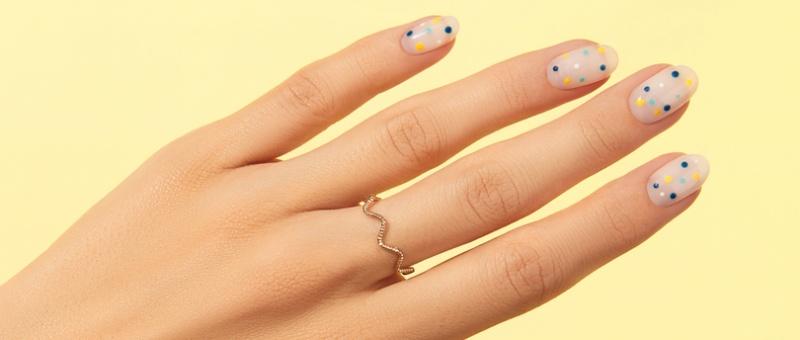
What your nails say about your health
Peer reviewed by Dr Colin Tidy, MRCGPLast updated by Victoria RawLast updated 12 Aug 2025
Meets Patient’s editorial guidelines
- DownloadDownload
- Share
- Language
- Discussion
Most of us take them for granted - after all, they aren't alive, and you can break one without it hurting. I'm talking, of course, about your nails. But you'd be surprised at how many things they tell you about your general health.
In this article:
Continue reading below
Fungal nail infections
Fungal infections - whether it's athlete's foot, vaginal thrush or that sore, itchy rash in your groin or under your breasts - very commonly affectyour skin.
Thrush is caused by a fungal infection, from yeasts which normally live harmlessly on all our skins. But if a fungus gets into your nails, it can be difficult to get rid of. The main symptoms are thickened, flaky, discoloured nails - often your toenails.
If your doctor thinks a fungus may be to blame, they will probably send a clipping from your nail to the laboratory. Over the counter medicines containing amorolfine 5% can work on nails but can take months. If the infection is on multiple nails, you may need to take a tablet a day for three to six months to get rid of the infection. Fortunately, it may be unsightly but it's harmless.
What your nails say about your health
Psoriasis
Little pits in your nails are common. Very occasionally, they can be a sign of a condition called psoriasis. We usually think of psoriasis as a skin condition which causes red patches - but in a few people, the main symptom is joint pain. It's worth talking to your doctor if you have persistent or unsightly pits in your nails.
Continue reading below
Clubbing
No, not partying late into the night, but swelling of the end portion of the fingers, along with curving over of the fingernails. It's sometimes described as 'drumstick fingers' because of the swelling.
Usually linked to lung or heart conditions, along with inflammatory bowel diseases such as Crohn's and ulcerative colitis, or primary biliary cirrhosis, it definitely needs checking out.
White spots
I've lost count of the number of people who've told me they're short of calcium because they have white spots or lines on their nails. In fact, it's nothing to do with this. It's probably simple bashes and bangs to your nails.
The best thing you can do is to stop worrying - and maybe protect your nails to prevent it happening again. It's very common in gardeners and DIY enthusiasts. The spots or lines will gradually grow out to the ends of your nails and then disappear.
Continue reading below
Ingrowing toenails
Ingrowing toenails usually affect the side of your big toe. The nail starts to grow into the flesh at the side of your nail, and can cause a serious infection.
Prevention
This can often be treated with antibiotic creams or tablets. Occasionally, it keeps coming back, and you may need a minor operation to remove part or your entire toenail.
Simple steps to keep ingrowing toenails at bay
Don't ever cut your toenails down at the sides - always cut them straight across, leaving them longer at the sides.
Make sure your shoes have plenty of room at the front, so your toes aren't squashed.
Wear open-toed sandals or comfy slippers at home, to avoid pressure on your toes.
These measures will also reduce your chance developing bunions too. Finally, if you find it hard to cut your own toenails, talk to your doctor about a referral to your local chiropody or toenail cutting service.
Patient picks for Nails

Skin, nail and hair health
Why do we have nails?
Strictly speaking, unless your survival depends on the ability to pick fruit from the lower branches of trees, you don't actually need nails. Sure, fingernails are useful things to have when you want to pop open a tube of Pringles or find out whether you've won the lottery without hunting around for a coin. But they are not essential for life in the same way as, say, the lungs are. Fingernails can be looked on as a little gift from evolution that you can spray with sparkle or simply chew on when you are anxious, but they are not vital for human existence. Similarly, toenails have their uses, but if you didn't have them, you'd get by.
by Dr Laurence Knott

Skin, nail and hair health
Fungal nail infection
Fungal infection of nails (tinea unguium) is common, particularly in toenails in the elderly. The infection causes thickened and unsightly nails which sometimes become painful. Medication often works well to clear the infection but you may need to take medication for several months or longer.
by Dr Philippa Vincent, MRCGP
Continue reading below
Article history
The information on this page is peer reviewed by qualified clinicians.
Next review due: 12 Aug 2028
12 Aug 2025 | Latest version
25 Jan 2019 | Originally published
Authored by:
Dr Sarah Jarvis MBE, FRCGP

Ask, share, connect.
Browse discussions, ask questions, and share experiences across hundreds of health topics.

Feeling unwell?
Assess your symptoms online for free
Sign up to the Patient newsletter
Your weekly dose of clear, trustworthy health advice - written to help you feel informed, confident and in control.
By subscribing you accept our Privacy Policy. You can unsubscribe at any time. We never sell your data.